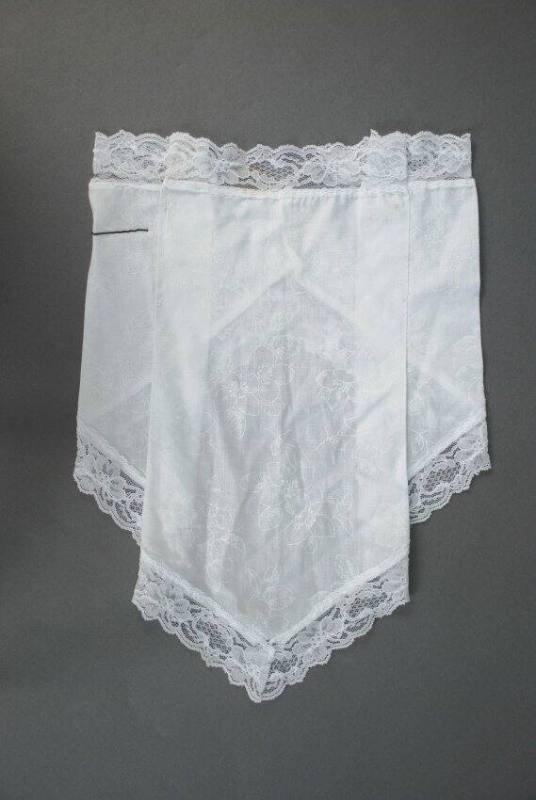Costume, Dance
Object number2016.32.7
Date1985-2005
MediumFabric/Metal
Credit LineGift of Mary Ferro
DescriptionWhite fabric headpiece. Floral print fabric with white lace trim along edges; lace has floral pattern. Headpiece is folded into a triangular shape. Metal bobby pin clamped on proper left edge.Dimensions13.25 x 18.5 in. (33.7 x 47 cm)Historical NotesThis headpiece was worn interchangeably with the I Campagnoli Sicilian costume (2016.32.1) and the Frosinone costume (2016.32.2). Part of the I Campagnoli costume collection. This collection of costumes belonged to Mary Ferro, a lifetime member and former co-director, of the Italian folk and dance troupe I Campagnoli. Sponsored by the Italian Sons and Daughters of America in the early 1960s, I Campagnoli was first directed by Professor Lorenzo Malfatti and Eugene Ricotti (later Richards). Initially, members were primarily Italian immigrants. I Campagnoli met weekly and learned a wide range of Italian folk music collected by Malfatti; members also learned corresponding dances. The music was primarily in Italian dialect from various regions of Italy. In the late 1960s, the donor's mother, Jane Ferro, took over as director for I Campagnoli. She organized their participation in various folk festivals in the United States, in addition to the opening of the Italian section of Walt Disney World's Epcot theme park. Ferro also brought I Campagnoli to Italy where they performed in cities such as Lucca, Rome, and Venice. In this collection of costumes, each costume worn by I Campagnoli members was handmade by female members of the ISDA to reflect the region the music and dances belonged to. In general, blues, greens, and purples would be worn by northerners while brighter reds, greens, and maroons were worn by southerners. Those who lived closer to the sea would be found wearing various shades of blue. In addition to color, the headdress distinguished the region from which the costume originated. Also, aprons were the most decorated part of the costume as designs and trimmings were hand-woven into the fabric.
Previous owner
Mary Ferro
Related institution
I Campagnoli
Related institution
Italian Sons and Daughters of America
Terms
On View
Not on view1985-2005
1985-2005
1985-2005
c. 1984
1985-2005
1985-2005
Respironics, Inc.














